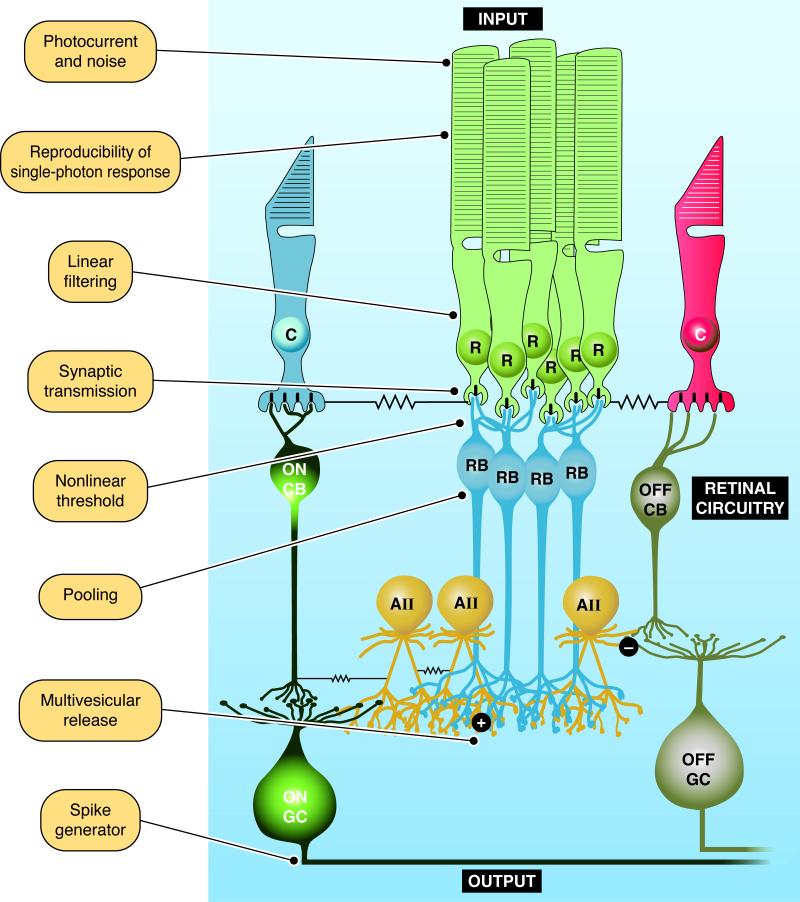Figure 1.
The rod bipolar pathway and mechanisms optimizing the signal-to-noise ratio of single-photon responses. Near visual threshold a retinal pathway conserved across mammalian species, called the rod bipolar pathway, conveys single-photon responses generated in rod photoreceptors (R) to retinal ganglion cells (GCs). In this pathway many rods converge on a rod ON bipolar cell (RB), which in turn send their excitatory output through glutamatergic synapses (+) to depolarizing AII amacrine cells (AII). In turn these signals are relayed to ON and OFF cone bipolar cells (CBs) through gap junctions and glycinergic synapses (-), respectively. ON and OFF CBs in turn feed into ON and OFF GCs. Cone photoreceptors (C) are also depicted. Functional specializations throughout this pathway improve the detection of single-photon responses, and are identified. The challenges faced by the visual system as the signal sequentially proceeds through this circuitry are espoused in the text.

